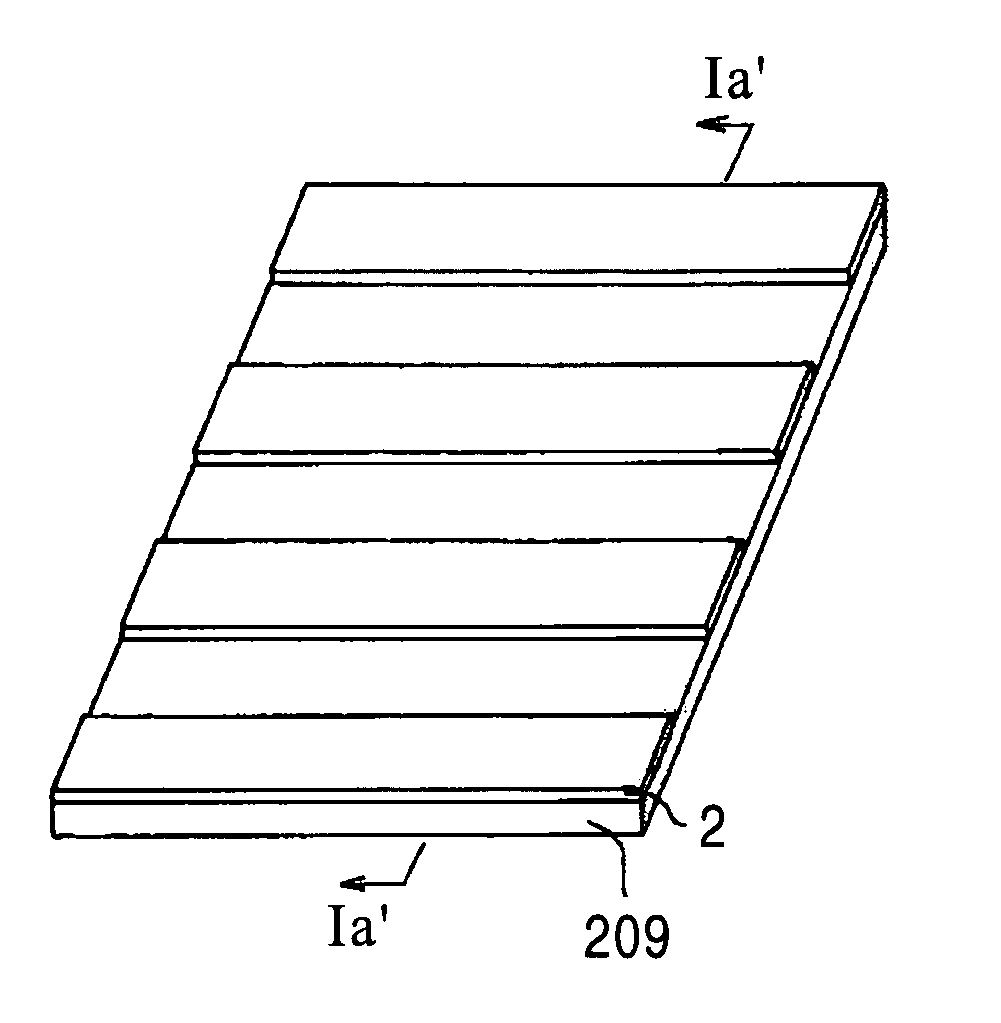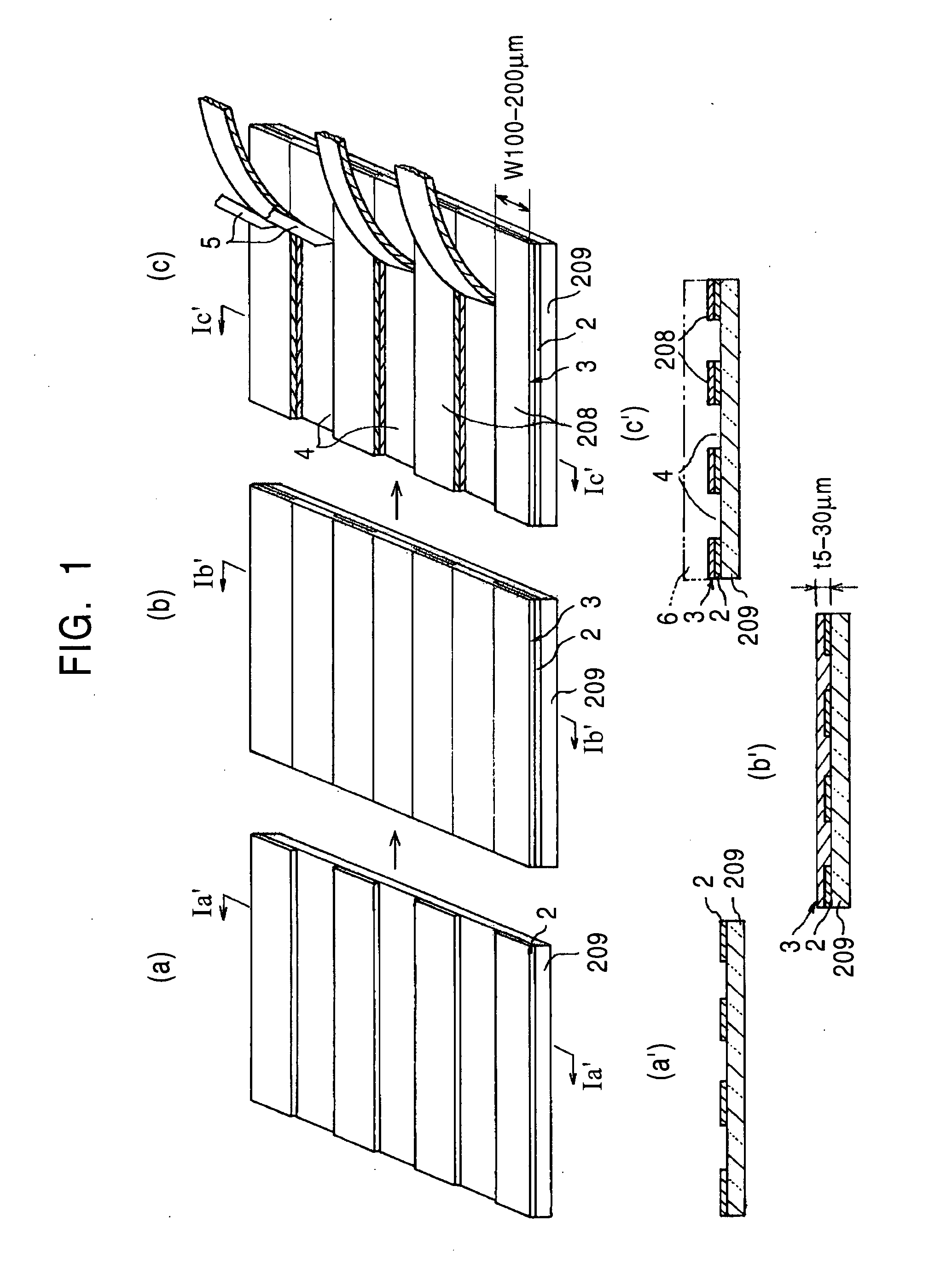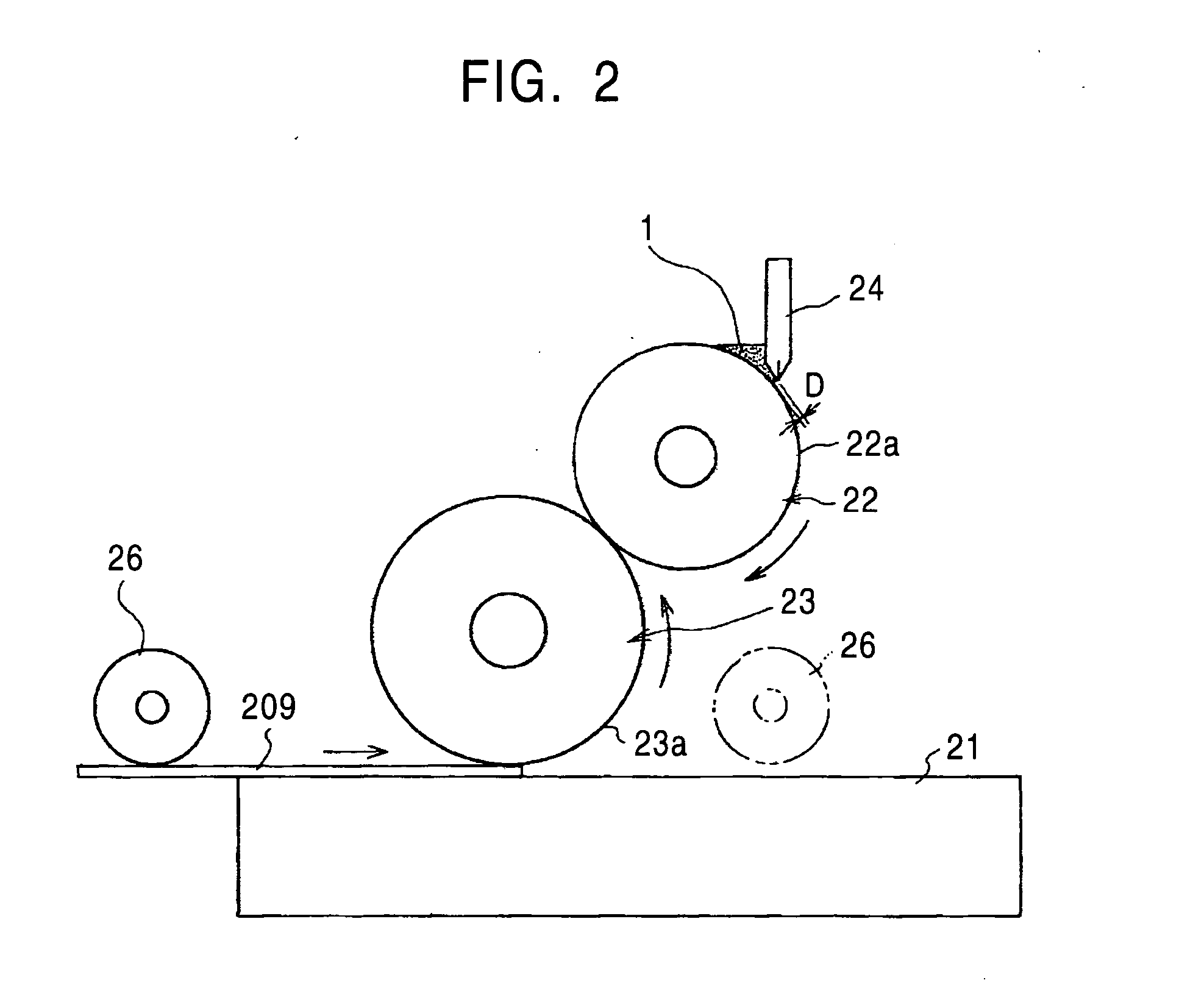Method for manufacturing divided waveplate filter
- Summary
- Abstract
- Description
- Claims
- Application Information
AI Technical Summary
Benefits of technology
Problems solved by technology
Method used
Image
Examples
concrete example 1
[0092]FIG. 5 illustrates a concrete example of the formation of the material layers and the orientation treatment according to each embodiment of the present invention. An ink layer 9 includes a birefringent liquid crystal polymer having thermotoropic phase or a birefringent liquid crystal polymer having lyotropic phase. The divided waveplate is formed with the ink layer 9.
[0093] In a pre-treatment, referring to part (a) in FIG. 5, an alignment film 8 composed of, for example, polyimide is formed on the entire surface of the substrate 209. Referring to part (b) in FIG. 5, a rubbed portion 8a is formed by rubbing such that the alignment film 8 has a predetermined pattern.
[0094] Referring to part (c) in FIG. 5, the ink layer 9 is formed on the entire surface of the alignment film 8 by printing. In the case where the ink layer 9 includes a birefringent liquid crystal polymer having thermotoropic phase, the ink layer 9 is melted by heating and undergoes a phase change at the heating t...
concrete example 2
[0097]FIG. 6 illustrates a concrete example of the formation of the material layers and the orientation treatment according to each embodiment of the present invention. An ink layer 9 includes a birefringent liquid crystal polymer having thermotoropic phase or a birefringent liquid crystal polymer having lyotropic phase. An example using a birefringent liquid crystal polymer having thermotoropic phase will be now described. The divided waveplate is formed with the ink layer 9.
[0098] In a pre-treatment, referring to part (a) in FIG. 6, an alignment film 8 composed of, for example, polyimide is formed on the entire surface of the substrate 209. Referring to part (b) in FIG. 6, a rubbed portion 8a is formed by rubbing, for example, on the entire surface of the alignment film 8.
[0099] Referring to part (c) in FIG. 6, the ink layer 9 is formed on the rubbed portion 8a by printing, such that the ink layer 9 has a predetermined pattern. As in Concrete Example 1, since the ink layer 9 inc...
concrete example 3
[0107]FIGS. 9 and 10 illustrate concrete examples of the formation of divided waveplates using a photo-curable monomer as an ink layer 12. The monomer is eventually polymerized. The above examples basically include the following different methods: (1) a method using an alignment film as an underlayer; (2) another method wherein an alignment film is not formed and the monomer is exposed with polarized light; and (3) another method wherein the orientation treatment is performed after polymerization.
[0108]FIG. 9 illustrates the example described in (1) above. Referring to part (a) in FIG. 9, the alignment film 8 composed of, for example polyimide, is formed on the entire surface of the substrate 209. Referring to part (b) in FIG. 9, the alignment film 8 is rubbed to form the rubbed portion 8a such that the rubbed portion 8a has a predetermined pattern.
[0109] Referring to part (c) in FIG. 9, the ink layer 12 composed of a photo-curable monomer is formed on the entire surface by printi...
PUM
| Property | Measurement | Unit |
|---|---|---|
| Pressure | aaaaa | aaaaa |
| Adhesivity | aaaaa | aaaaa |
| Phase | aaaaa | aaaaa |
Abstract
Description
Claims
Application Information
 Login to View More
Login to View More - R&D
- Intellectual Property
- Life Sciences
- Materials
- Tech Scout
- Unparalleled Data Quality
- Higher Quality Content
- 60% Fewer Hallucinations
Browse by: Latest US Patents, China's latest patents, Technical Efficacy Thesaurus, Application Domain, Technology Topic, Popular Technical Reports.
© 2025 PatSnap. All rights reserved.Legal|Privacy policy|Modern Slavery Act Transparency Statement|Sitemap|About US| Contact US: help@patsnap.com



